A heart-wrenching incident occurred when a tiny canine got caught up in a life-threatening battle with a colossal python. The dog had been innocently strolling around the garden when the python, with incredible agility, pounced on it unexpectedly. With immense courage and determination, the dog put up a fierce resistance and fought back with all its might to protect itself from the python’s deadly grip. Despite its valiant efforts, the dog was overpowered by the python’s immense strength and struggled helplessly to break free.

Luckily, the little dog’s fight for survival was not in vain as some compassionate individuals spotted the chaos and raced to the scene. Acting quickly, they managed to pry open the giant python’s jaws and save the helpless pooch from certain doom. This eye-opening event serves as a stark reminder of the hidden hazards that can lurk in unexpected places. We must always remain alert and mindful of our surroundings to keep our furry friends out of harm’s way. Even when we assume that our pets are safe within the confines of our own property, we cannot let our guard down against potential predators in the natural world.

The unwavering determination and bravery of the tiny dog are a powerful reminder that strength knows no size, and even the smallest creatures can exhibit remarkable courage when faced with danger. The swift intervention and empathy shown by those who stepped in to help underscore the vital importance of treating all living beings with kindness and compassion.
The story of the small dog’s frightening ordeal serves as a reminder to all pet owners to remain vigilant and aware of the potential hazards that surround us. This little dog’s rescue showcases the strength of empathy and compassion in our society, emphasizing the idea that every life is valuable and worthy of saving.
Aquilegia, also known as Granny’s Bonnet or Crowfoot, is a stunning plant that originates from the northeastern regions of Canada and the United States. Not only are native species available to garden enthusiasts, but introduced species from Europe and hybrids with improved features like a wide range of colors, sturdiness, and impressive heights can also be found.
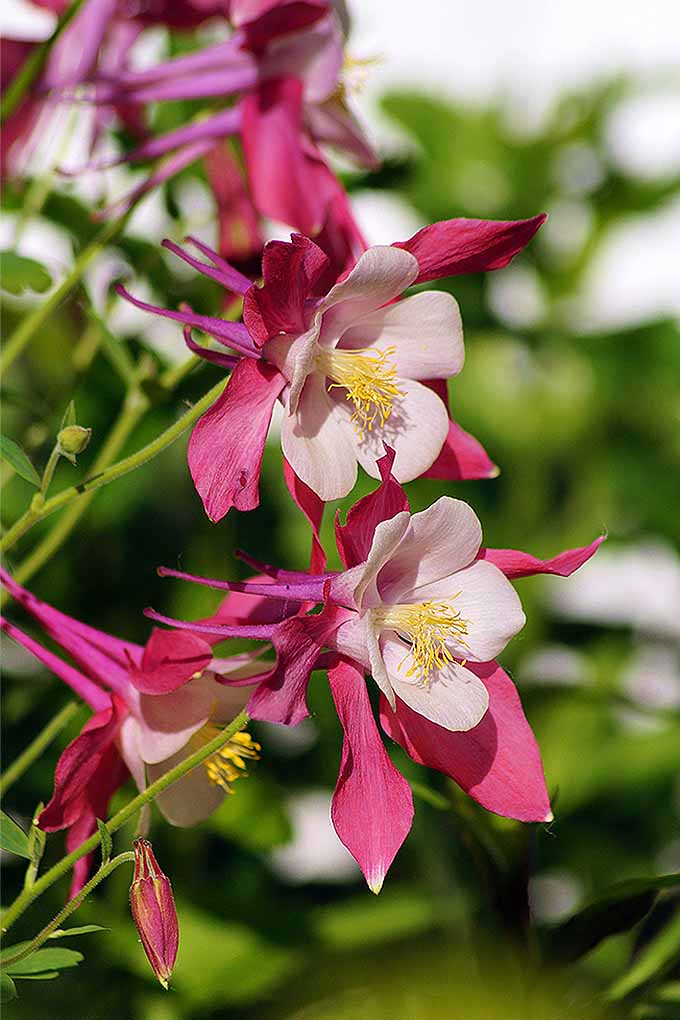
The Aquilegia plant, also known as A. vulgaris, is a sight to behold with its stunning display of colors ranging from orange and pink to purple, red, white, yellow, and green. The flowers come in different sizes, from petite six-inch blooms to towering three-feet-tall flowers. These delicate two-toned blooms sit atop slender stems emerging from fern-like foliage. The plant’s slender nectar-filled spurs are a favorite of bumblebees and hummingbirds. This plant is strong and resilient, thriving in full sun in cool regions and partial to full shade in warmer areas. It can withstand drought and prefers average to moist, well-drained soil.
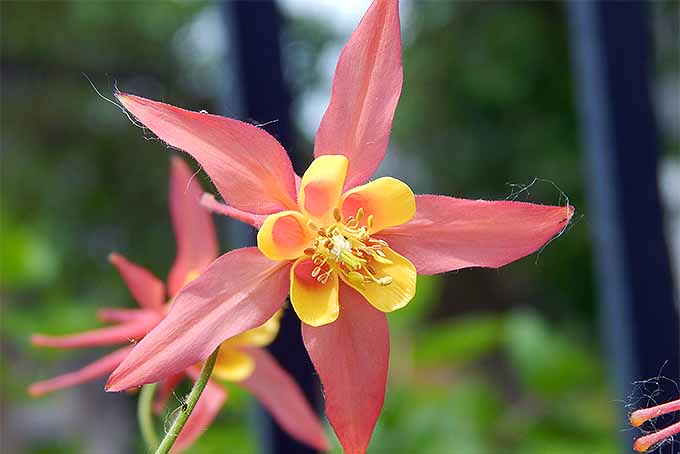
The Eastern or wild red columbine, also known as A. canadensis, is a native plant that commonly grows in cool, shaded woodland areas. Its unique blossoms, which droop downward and have red or pink petals with yellow centers, make it a favorite among hikers in mountainous regions. Another noteworthy native plant is the A. caerulea, which comes in the Colorado blue variety and is featured in our article on 11 Native Blue Wildflowers for the Garden. Additionally, non-native varieties of Aquilegia, such as A. vulgaris and A. alpina, have become naturalized in the United States.
If you’re interested in propagating columbine, it’s important to note that it’s a short-lived perennial that usually lasts around three years. While it self-sows, the offspring of hybrids may not be of equal quality, and cross-pollination between plants can result in varying colors of offspring when grown from seed. To start seeds, you can either do so indoors in late winter or outdoors after the last average frost date of spring or sow them once summer heat has subsided. Be sure to moisten the potting medium lightly when starting seeds and work the soil down about six inches until it’s crumbly when planting outdoors, adding sand or leaf mulch to improve drainage and loosen the soil.
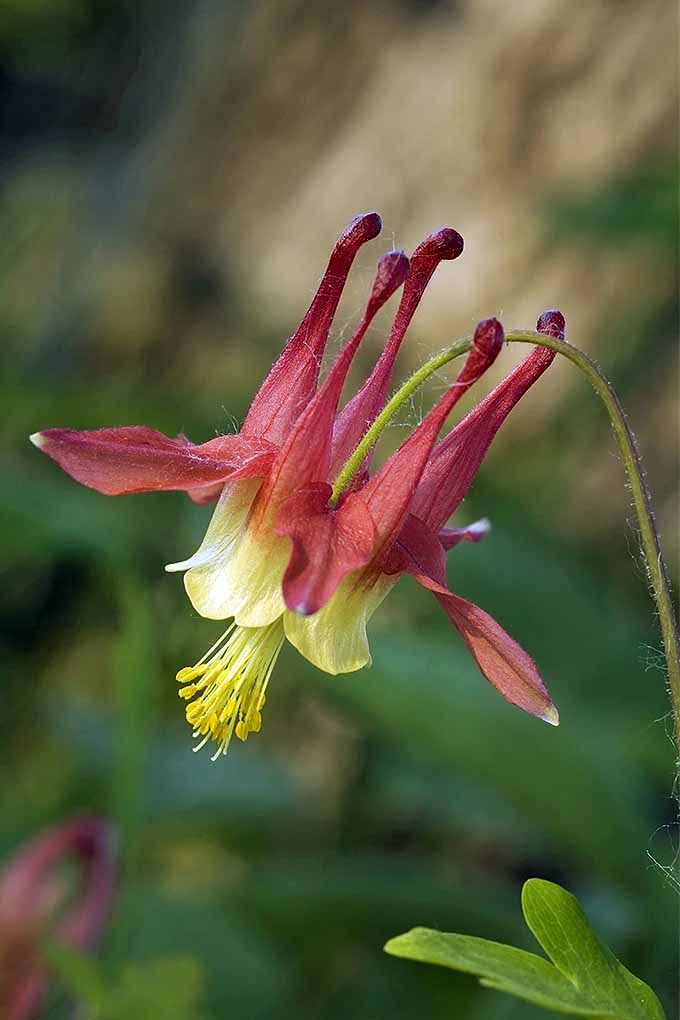
When it comes to cultivating Aquilegia canadensis, start by scattering the seeds on top of the soil and gently pressing them down without covering them. If you germinate the seeds indoors, wait until the cotyledons appear before exposing them to indirect sunlight. Just be careful with windowsill placement, as heat may scorch the delicate sprouts. Keep the soil adequately moist, but don’t let it get too waterlogged. Once the first true leaves emerge, gradually acclimate the seedlings to outdoor conditions over several days before moving them to the garden.
If you’re planting or transplanting outdoors, choose a spot with well-drained soil and full or partial sun. If necessary, conduct a soil test to check its pH and quality. Give the plants enough water, especially in the absence of rainfall as the temperature rises. To encourage seed germination, refrigerate them overnight before planting. Be sure to provide adequate drainage to avoid rot during dormancy. When planting different cultivars, keep them separated from each other to prevent cross-pollination. Follow the instructions on the seed package for plant spacing to prevent fungal disease buildup.
Aquilegia canadensis is perfect for garden beds and borders due to its shallow root system, clumping growth habit and various color options.
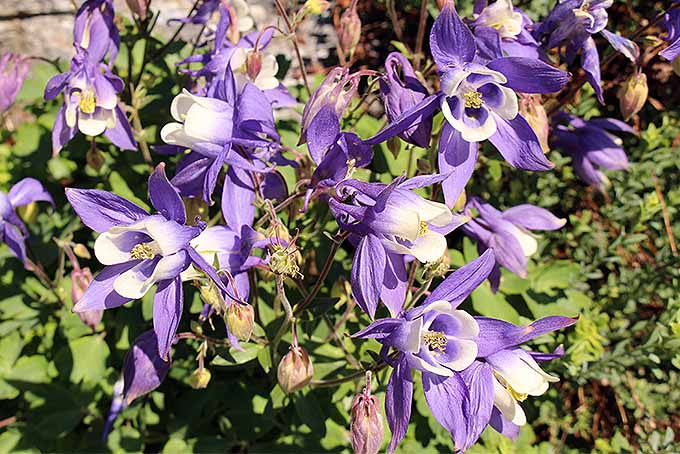
Aquilegia, also known as columbine, is a popular choice for cottage-style gardens as it complements both tall and short plants with its sparse foliage. It is also perfect for small spaces and container gardening. To create a delicate and wispy foreground display, plant it in the shade cast by shrubbery or taller companions. With Aquilegia, you can attract beneficial pollinators such as bumblebees, butterflies, and hummingbirds to your garden. Consistent moisture during germination and seedling stages is necessary for maintenance, and once established, weekly watering is enough. It self-sows, but if you want to avoid a “potluck” variety, weed out hybrids that differ from the parent plant. Deadheading spent blossoms encourages more growth. There are several cultivars of columbine available with exceptional features like pest resistance, unusual colors, double petals, varying spur lengths, and upward-facing blossoms. A stunning focal point is the ‘Blue Star’ with its upward-facing, cerulean blue star-like outer sepals with slender spurs and contrasting white centers.
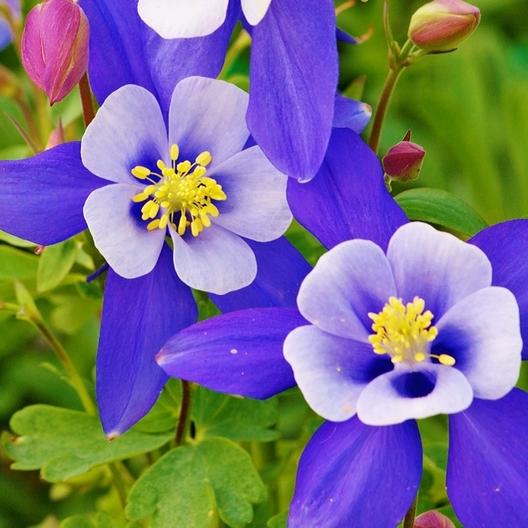
During the spring-to-summer season, a great way to give your visitors a warm welcome to your home is by planting a mass of beautiful ‘Blue Star’ near your entryway. With their striking blue flowers that grow up to 30 inches tall and measure around three to four inches in diameter, you can enjoy their vibrant blooms throughout spring and summer. You can easily get ‘Blue Star’ seeds from Eden Brothers if you’re interested in planting them in your garden. Another option is to plant ‘McKana Giant’ for a stunning and colorful visual display. These plants grow two to three feet tall and feature gorgeous multicolored blossoms that make for an attractive focal point in any garden setting while adding vertical interest.
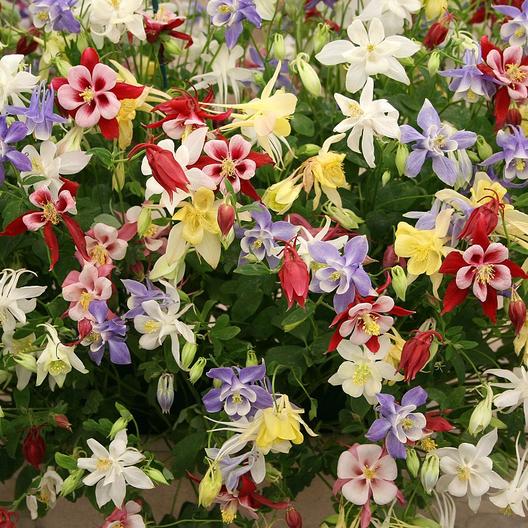
The McKana Giant variety of A. hybrida is an eye-catching option with upward-facing flowers that display a hand-painted appearance in various colors like purple, red, white, yellow, and bi-color combinations. The blooms have long spurs and are around two to three inches in diameter. This type typically blooms from spring through summer and can be acquired from Eden Brothers. Another notable option is the Swan Burgundy and White variety which features deep burgundy sepals and velvety spurs, with white centers accented with the same vivid burgundy hue. These flowers are also about two to three inches wide and create an impressive contrasting visual effect.
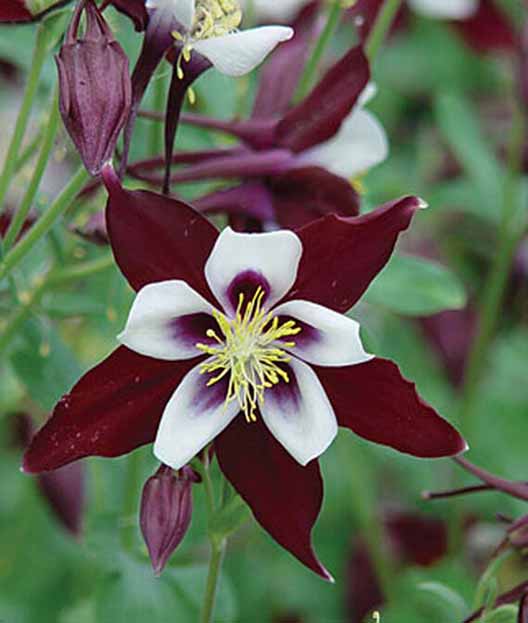
Are you on the lookout for a flexible plant to spruce up your garden? Look no further than the versatile ‘Swan Burgundy and White’ variety! Standing at a manageable 18 to 20 inches, this plant can be paired with both muted and bold colors to create a stunning display. With blooms that last from spring to summer, it’s a reliable addition to any outdoor space. If you’re interested in growing the ‘Swan Burgundy and White’ yourself, head over to Burpee and purchase the seeds. For a more natural and native option, consider the wild columbine, also known as A. canadensis. This species can be found growing throughout Canada and boasts smaller, downward-facing flowers with upward-pointing spurs. While they may not be as flashy as hybrids, they still offer a unique beauty that can elevate any garden.

Aquilegia canadensis, commonly known as the Eastern red columbine, boasts striking one- to two-inch flowers with yellow centers and red sepals. While its spurs are shorter than those of hybrid species, this native plant can grow up to two feet tall and blooms in the spring. For small-space gardens, experts recommend planting large quantities to make it stand out. You can purchase wild columbine plants or seed packets from Nature Hills Nursery and Earthbeat Seeds, respectively. However, be wary of potential pests like leaf miners and powdery mildew that can damage the foliage. Applying neem oil can help control these issues. This moderate-maintenance herbaceous perennial flowering plant thrives in various soils, tolerates deer, rabbits, and drought, and attracts bumblebees, butterflies, and hummingbirds. As such, it’s a fantastic addition to beds, borders, cottage gardens, and small-space gardens. With its vibrant hues, this lovely flower announces the arrival of spring.

A popularly recognized type of blooming flora is the caerulea, otherwise referred to as the blue lotus.